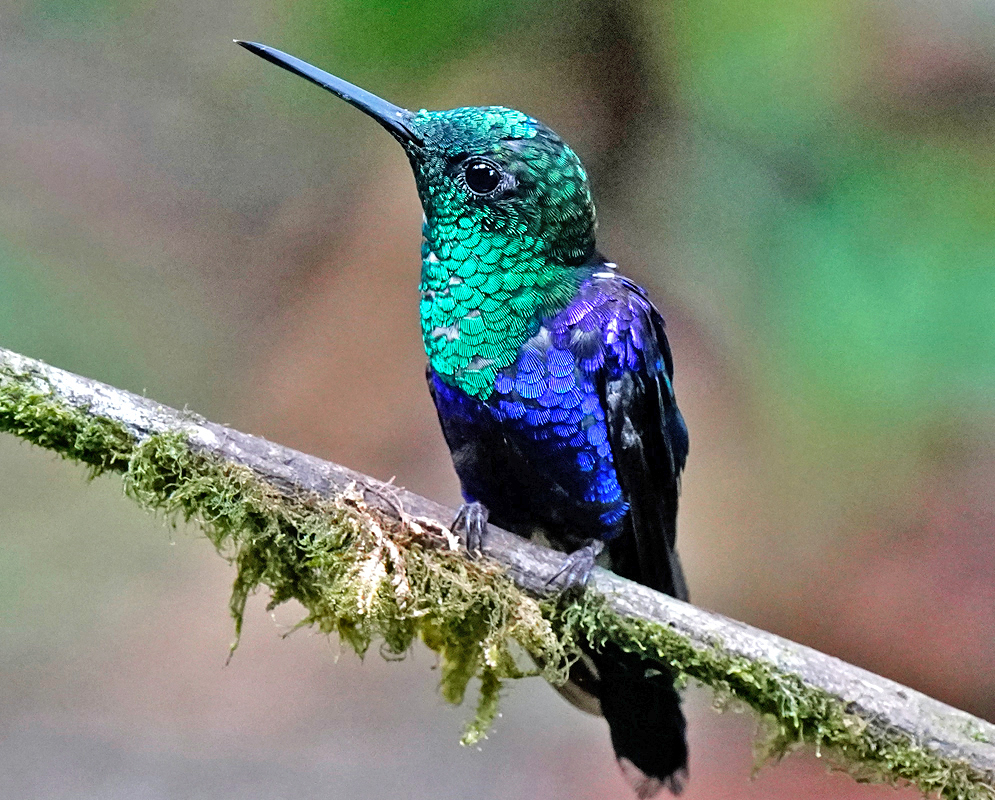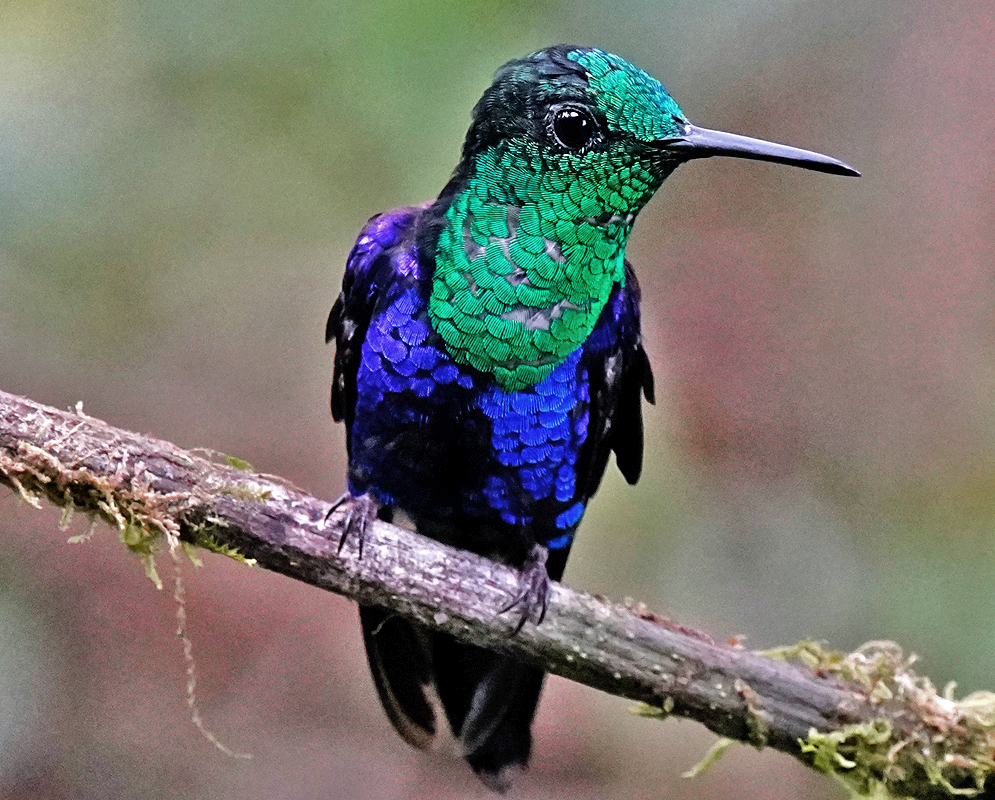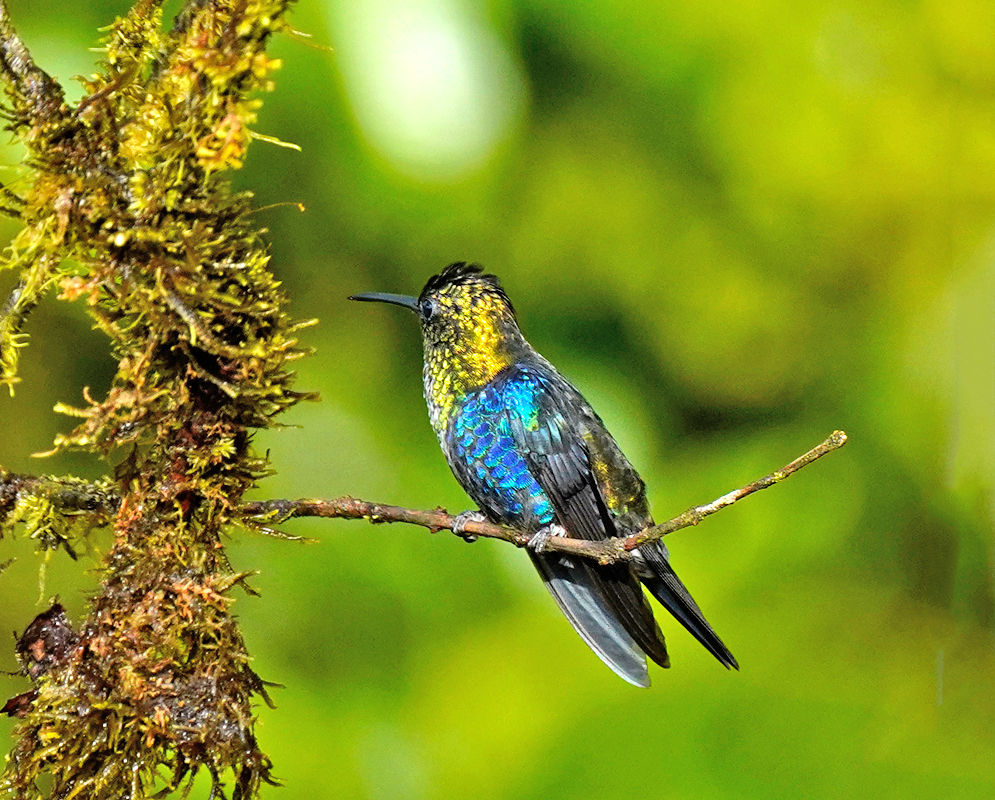This post has 11 Simple Fields-fields attached. Show fields.

Thalurania furcata is a hummingbird species found primarily in the tropical regions extending from Colombia and Venezuela southward through Brazil, Peru, and Bolivia. This bird inhabits a variety of lowland forest environments, including humid forests, forest edges, and secondary growth, often favoring areas near water sources. While primarily a resident of rainforests, it can also adapt to gardens and plantations, especially when flowering plants that provide nectar are present, making it relatively adaptable within its natural range. The Fork-tailed Woodnymph exhibits a striking sexual dimorphism; males are vibrant with iridescent green and blue feathers, with a distinct forked tail that appears almost black, while females are generally duller with green upperparts and grayish underparts. Both sexes have a straight, slender bill adapted for nectar feeding, which is the primary component of their diet, though they also consume small insects for protein. This hummingbird is known for its territorial behavior, particularly males, who aggressively defend rich nectar sources. In addition to their territorial displays, males perform elaborate courtship flights to attract females, showcasing their agility and control in flight.This species is considered to have a stable population and is not listed as endangered. Its presence in a variety of habitats, including urban and semi-urban gardens, helps sustain its population, particularly in regions where suitable flowers are cultivated. Unlike some other hummingbirds, it is not known to migrate, although some localized seasonal movements may occur based on food availability.





